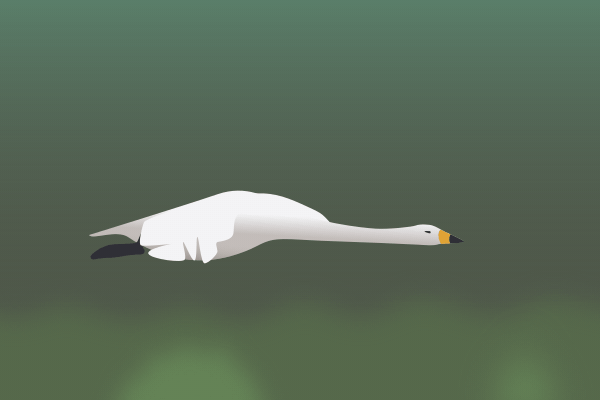

So, once you moved to Synfig you have to keep there to avoid making a lot of duplicated work.
#Inkscape animation update
One problem with this method is that you can’t easily modify your objects in Inkscape and then automatically import them in Synfig and update the current animation to work with it. If you are a LibGDX user and want to use the Texture Packer, you can create a folder and copy the PNG files changing their names to animationname_01, animationname_02, etc, and let Texture Packer to automatically import it. For this example, I used a Gimp plug-in named Sprite Tape to import all the separated PNG files and create a sprite sheet: However, it you can’t configure some of the formats and the exported file is not what I wanted so I preferred to export to a list of PNG files and then use the convert tool to create the animated GIF:įinally, I have a time lapse of how I applied the method if you want to watch it:Įxtra section: Importing the animation in your gameĪfter we have separated PNG files for the animation, we can create a sprite sheet or use another tools to create files to be easily imported by a game framework.

You can export it to different format, for example, a list of separated PNG files for each animation frame or an animated GIF. To export it, use the “Show the Render Settings Dialog” button and configure how much frames per second you want, among other things, and then export it using the Render button. Here is the Synfig file with the animation if you are interested on it. In my case I created some kind of eating animation by making a mouth, opening it slow and then closing it fast:

The next step is to use your super animation skill and animate the object. To fix it, we have to create a new document and copy the shape from the one exported by Inkscape to the new one. However, there is a bug, probably with the svg2sif extension and the time line is missing. Now that we have the Synfig file we open it and voilà, we can animate it. sif format (added by the svg2sif extension), and save it. With the model defined, we have to save it as Synfig format using the extension, so go to “Save a Copy…” and select the. Here is the SVG if you are interested on it, sadly WordPress doesn’t support SVG files as media files. For this mini tutorial I created a black creature named Bor…ahem! Gishus Maximus: We start by creating an Inkscape object to be animated later. Now that we have the method defined, we will explain it by showing an example. I don’t know possible limitations of the svg2sif Inkscape extension, so use it with caution, don’t expect everything to work fine.
#Inkscape animation how to
In particular I tried an Inkscape extension named svg2sif which lets you save files in Synfig format and seems to work fine (the page of the extension explains how to install it).

Luckily, the format is open and there are already some ways to transform from SVG to Synfig. However, it uses its own format, so you can’t directly import an SVG. It lets you create nice animations using a time line and key frames and lets you easily export the animation.
#Inkscape animation free
Synfig Studio is a free and open-source 2D animation tool, it works with vector graphics as well. If you make some modification on of the key frames, then you have to interpolate everything again. It has some ways to create interpolations of objects between two different states but it is unusable since it doesn’t work with groups, so if you have a complex object made of a group of several other objects, then you have to interpolate all of them. However, it lacks of some features which would make it a great tool, for example, a way to animate objects by making interpolations of its different states defining key frames and using a time line, among others. Inkscape is one of the best open source, multi platform and free tools to work with vector graphics using the open standard SVG.Īfter some time using Inkscape, I have learned how to make a lot of things and feel great using it. In this blog post we want to share a method to animate Inkscape SVG objects using Synfig Studio, trying to follow a similar approach to the Building 2d sprites from 3d models using Blender blog post. Building 2d animations using Inkscape and Synfig


 0 kommentar(er)
0 kommentar(er)
